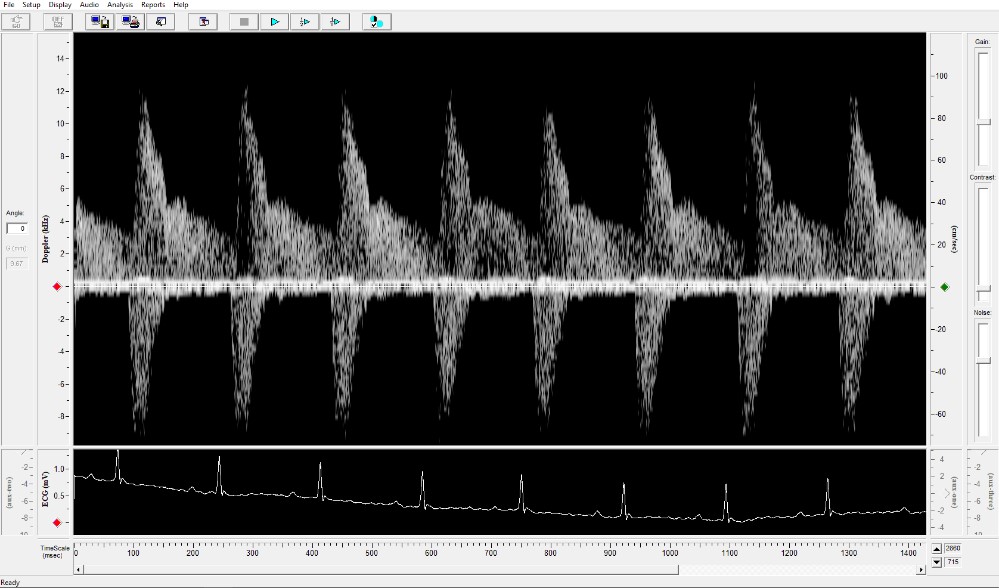A Tale of Two Tubes:
Exploring the Causes of Cardiovascular Disease from the Arteries to the Gut
- Colorado State University


The Integrative Cardiovascular Physiology laboratory at Colorado State University investigates the underlying causes of cardiovascular abnormalities in the settings of obesity and nutrient excess.
Obese individuals are at an increased risk for developing cardiovascular disease (CVD)1. Prior to overt clinical manifestation of CVD, the arteries of obese individuals (and other at-risk populations) begin to stiffen. Arterial stiffness is one of the strongest predictors of subsequent cardiovascular events and mortality2. Thus, measurement of arterial stiffness in obese individuals and experimental animals provides important information regarding cardiovascular function and disease risk.
The Doppler Flow Velocity System from Indus instruments provides a non-invasive technique for measuring arterial stiffness. Specifically, the system can measure the velocity at which an arterial pulse wave (created during each cardiac cycle) travels down the aortic tree; a phenomenon called pulse wave velocity (PWV). Stiff arteries, such as those seen in obese individuals and experimental animals, are unable to expand appropriately in order to accommodate the increased blood flow during systole, thus resulting in an increased PWV.
Using this technique in rodent models, the Integrative Cardiovascular Physiology laboratory has demonstrated that mice that develop obesity from either genetic aberrations or a high fat diet display an increase in PWV compared to their lean counterparts. Recent studies in the laboratory have examined the role of the gut microbiota in the development of arterial stiffness in these mice. In one study, administration of broad-spectrum antibiotics to suppress the gut microbiota reversed arterial stiffness following a high fat diet3. In another study, lean mice receiving the microbiota from genetically obese mice displayed increased arterial stiffness4. These results suggest that the gut microbiota mediates the development of arterial stiffness in obesity. Current studies are examining the underlying cellular basis of these changes in arterial stiffness, as well as determining whether the pre-clinical findings are relevant to human obesity.
Studies performed in the Integrative Cardiovascular Physiology Laboratory are funded by the National Institutes on Aging, the National Heart, Lung and Blood Institute, and the American Heart Association.
References
- Krauss RM, Winston M, Fletcher BJ and Grundy SM. Obesity: impact on cardiovascular disease. Circulation. 1998.
- Mitchell GF, Hwang SJ, Vasan RS, Larson MG, Pencina MJ, Hamburg NM, Vita JA, Levy D and Benjamin EJ. Arterial stiffness and cardiovascular events: the Framingham Heart Study. Circulation. 2010.
- Battson ML, Lee DM, Jarrell DK, Hou S, Ecton KE, Weir TL and Gentile CL. Suppression of gut dysbiosis reverses western diet-induced vascular dysfunction. Am J Physiol Endocrinol Metab. 2017.
- Battson ML, Lee DM, Li Puma L, Ecton KE, Thomas KN, Febvre H, Chicco AJ, Weir TL, Gentile CL. Gut microbiota regulates cardiac ischemic tolerance and aortic stiffness in obesity. Am J Physiol Heart Circ Physiol. Under Peer Review.
If you are interested in learning more contact us at sales@scintica.com or give us a call at 519 914 5495